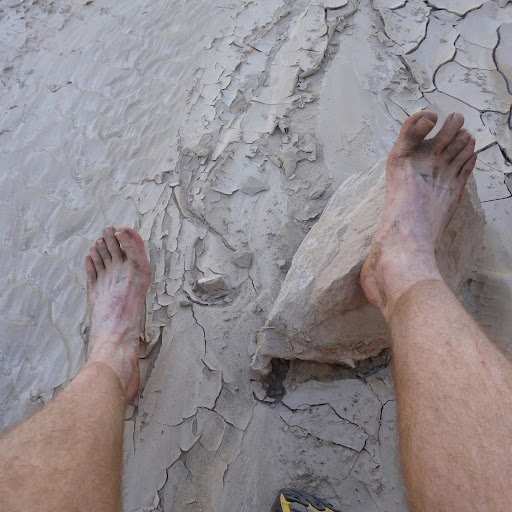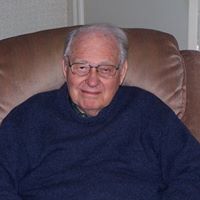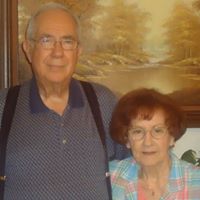David Jason Pruitt
age ~51
from Elk Grove, CA
- Also known as:
-
- David J Pruitt
- Shawnda Pruitt
- David J Pruit
- David Puritt
- Phone and address:
- 9729 Marbella Ct, Elk Grove, CA 95624
David Pruitt Phones & Addresses
- 9729 Marbella Ct, Elk Grove, CA 95624
- 9374 Scheurebe Pl, Elk Grove, CA 95624
- Livermore, CA
- Fremont, CA
- 4677 Alonso Ct, Fremont, CA 94555 • 5108476894
Work
-
Position:Executive, Administrative, and Managerial Occupations
Emails
Lawyers & Attorneys

David Pruitt - Lawyer
view sourceSpecialties:
Bankruptcy & Debt
Civil Litigation
Complex Litigation
Business Litigation
Corporate Litigation
Commercial Law
Labor and Employment
Intellectual Property
Civil Litigation
Complex Litigation
Business Litigation
Corporate Litigation
Commercial Law
Labor and Employment
Intellectual Property
ISLN:
918996693
Admitted:
2005
University:
University of Illinois, B.A.
Law School:
Chicago-Kent College of Law, Illinois Institute of Technology, J.D.

David Pruitt - Lawyer
view sourceAddress:
600 1St Source Bank Center\N100 North Michigan
Phone:
5742371284 (Phone)
Work:
Barnes & Thornburg LLP, Associate
Specialties:
Appeals & Appellate
Business Law
Products Liability
Appeals
General Civil
Intellectual Property
Litigation
Nanotechnology
Business Law
Products Liability
Appeals
General Civil
Intellectual Property
Litigation
Nanotechnology
Jurisdiction:
Indiana
Law School:
University of Notre Dame Law School
Education:
University of Notre Dame, BA
University of Notre Dame Law School, JD
University of Notre Dame Law School, JD
Memberships:
Indiana State Bar
Name / Title
Company / Classification
Phones & Addresses
Owner
Designr2
Business Services
Business Services
2185 Rosswood Dr, San Jose, CA 95124
COO
David Pruitt
Administration of Educational Programs
Administration of Educational Programs
4677 Alonso Court, Fremont, CA 94555
Owner
Designr2
All Other Personal Services
All Other Personal Services
2185 Rosswood Dr, San Jose, CA 95124
4086269913
4086269913
David Pruitt Consulting, LC
Business Consultation
Business Consultation
1104 38 St Lower Flt, Sacramento, CA 95816
HEALED BY A TOUCH LLC
BIKE TRAILERS OF ARKANSAS, INC
REO Cleanup, LC
President
5 Star Medical
Us Patents
-
Multi-Lumen Medical Device
view source -
US Patent:6458076, Oct 1, 2002
-
Filed:Feb 1, 2000
-
Appl. No.:09/495810
-
Inventors:David L. Pruitt - Union City CA
-
Assignee:5 Star Medical - San Jose CA
-
International Classification:A61B 100
-
US Classification:600146, 600139, 600128
-
Abstract:A multi-lumen medical device such as an endoscope or a catheter includes a shaft and a distal tip which are formed as multi-lumen extrusions having a large central working channel and a plurality of surrounding auxiliary lumens. The auxiliary lumens are arranged around the central working channel in a uniform manner so that the flexibility of the extruded member is uniform in a plurality of different directions. Use of the multi-lumen extrusion for the medical device provides a balanced device with a flexibility which is substantially the same in all directions. The medical device may be provided with four way tip deflection by providing four pull wires within four of the auxiliary lumens.
-
Leadframe With Support Members
view source -
US Patent:6703692, Mar 9, 2004
-
Filed:Jan 31, 2002
-
Appl. No.:10/066030
-
Inventors:David A. Pruitt - San Jose CA
-
Assignee:Linear Technology Corp. - Milpitas CA
-
International Classification:H01L 23495
-
US Classification:257666, 257667, 257670, 257676, 257787
-
Abstract:A leadframe is disclosed. The leadframe comprises a frame characterized by a substantially rectangular outline, a die paddle with a receiving surface, and a plurality of support members that connect the frame to the die paddle. The leadframe further comprises a plurality of leads connected to the frame, that will eventually serve to electrically connect an integrated circuit mounted on the die paddle to an external electrical device. The die paddle lies in a lower horizontal plane. A plurality of support members connect the frame with the die paddle. As projected on to a vertical plane that is perpendicular to the side of the frame to which a support member is attached, the offset angle between the support member and a vertical axis is less than 45 degrees.
-
Flashless Lead Frame With Horizontal Singulation
view source -
US Patent:7154165, Dec 26, 2006
-
Filed:Jul 21, 2004
-
Appl. No.:10/895095
-
Inventors:David Pruitt - San Jose CA, US
-
Assignee:Linear Technology Corporation - Milpitas CA
-
International Classification:H01L 23/495
H01L 23/48
H01L 23/52 -
US Classification:257670, 257666, 257669
-
Abstract:A lead frame is configured for use with a singulation apparatus that eliminates flash. A die pad is attached to sides of the frame by tie bars and peripheral portions. The peripheral portions have cutout sections defining openings that are bridged by lead frame segments. The apparatus applies a downward force to the lead frame segments and translates the downward force to a horizontal force applied to the tie bars. The singulation process confines movement of the lead frame metal to within the plane of the lead frame.
-
Flashless Lead Frame With Horizontal Singulation
view source -
US Patent:7414302, Aug 19, 2008
-
Filed:Aug 8, 2006
-
Appl. No.:11/500359
-
Inventors:David Pruitt - San Jose CA, US
-
Assignee:Linear Technology Corporation - Milpitas CA
-
International Classification:H01L 23/495
H01L 23/48 -
US Classification:257669, 257670, 257666, 257E23037
-
Abstract:A lead frame is configured for use with a singulation apparatus that eliminates flash. A die pad is attached to sides of the frame by tie bars and peripheral portions. The peripheral portions have cutout sections defining openings that are bridged by lead frame segments. The apparatus applies a downward force to the lead frame segments and translates the downward force to a horizontal force applied to the tie bars. The singulation process confines movement of the lead frame metal to within the plane of the lead frame.
-
Semiconductor Device Having A Suspended Isolating Interconnect
view source -
US Patent:7902665, Mar 8, 2011
-
Filed:Sep 2, 2008
-
Appl. No.:12/202835
-
Inventors:David Alan Pruitt - San Jose CA, US
-
Assignee:Linear Technology Corporation - Milpitas CA
-
International Classification:H01L 23/34
-
US Classification:257725, 257666, 257686, 257777, 257E23031, 257E23085
-
Abstract:A semiconductor device is configured to provide current and voltage isolation inside an integrated circuit package. The semiconductor device includes first and second semiconductor dies, a first isolating block positioned on the first semiconductor die, and a second isolating block positioned on the second semiconductor die. The semiconductor device also includes a first interconnect coil having a plurality of wires connecting the first semiconductor die to the second isolating block, and a second interconnect coil having a plurality of wires connecting the second semiconductor die to the first isolating block.
-
Flexible Contactless Wire Bonding Structure And Methodology For Semiconductor Device
view source -
US Patent:7960845, Jun 14, 2011
-
Filed:Jan 3, 2008
-
Appl. No.:12/003883
-
Inventors:David Alan Pruitt - San Jose CA, US
-
Assignee:Linear Technology Corporation - Milpitas CA
-
International Classification:H01L 21/60
H01L 23/495
H01L 23/48
H01L 23/52
H01L 29/40 -
US Classification:257784, 257401, 257691, 257779, 257735, 257672
-
Abstract:A semiconductor device such as a field-effect transistor, improved to reduce device resistance, comprises a leadframe which includes a die paddle integral with a first set of leads and a second set of leads that is electrically isolated from the first set, a semiconductor die having its lower surface positioned on, and electrically connected to, the die paddle, and a conductive layer on the upper surface of the die. At least one electrically conductive wire, preferably plural wires, extend laterally across the second surface of the semiconductor die, are in electrical contact with the conductive layer, and interconnect corresponding second leads on opposite sides of the die. The plural wires may be welded to leads in succession by alternate ball and wedge bonds on each lead. The conductive layer may be an aluminized layer on which is formed a thin layer a solderable material, such as tin. A solder is deposited on the tin layer, enmeshing the wires.
-
Lead Plating Technique For Singulated Ic Packages
view source -
US Patent:8076181, Dec 13, 2011
-
Filed:Oct 22, 2010
-
Appl. No.:12/910676
-
Inventors:David A. Pruitt - San Jose CA, US
Lothar Maier - Pleasanton CA, US -
Assignee:Linear Technology Corporation - Milpitas CA
-
International Classification:H01L 21/50
H01L 21/48
H01L 21/44
H01L 21/46 -
US Classification:438111, 438106, 438123, 438124, 438127, 438458, 257E21499, 257E21502, 257E21503, 257E21506, 257E21511
-
Abstract:A packaging technique is described for QFNs, DFN, and other surface mount packages that allows the sides of leads to be plated with a wettable metal prior to the lead frames being singulated from the lead frame sheet. The leads of the lead frames in the sheet are shorted together and to the body of the lead frame sheet by a sacrificial interconnect structure. Chips are mounted to the lead frames and encapsulated, leaving the bottoms of the leads exposed. The lead frame sheet is then sawed along boundaries of the lead frames but not sawed through the interconnect structure. The sawing exposes at least a portion of the sides of the leads. The leads are then electroplated while the leads are biased with a bias voltage via the interconnect structure. After the plating, the lead frame sheet is sawed completely thorough the interconnect structure to singulate the lead frames and prevent the interconnect structure from shorting the leads together.
-
Enhanced Pad Design For Solder Attach Devices
view source -
US Patent:8163643, Apr 24, 2012
-
Filed:May 4, 2010
-
Appl. No.:12/773477
-
Inventors:Maurice O. Othieno - Alameda CA, US
Ramaswamy Ranganathan - Saratoga CA, US
Frederick E. Beville - San Jose CA, US
David A. Pruitt - San Jose CA, US
William D. Griffitts - Santa Clara CA, US -
Assignee:Linear Technology Corporation - Milpitas CA
-
International Classification:H01L 21/44
-
US Classification:438612, 438106, 257678, 257E21499, 257E21506, 257E21509
-
Abstract:A semiconductor device is disclosed that has a die and a substrate having a die attachment area with a perimeter. A layer of solder connects the substrate and the die, the solder layer having at least one vent channel connected to the perimeter of the die attachment area, wherein the maximum distance from any point in the solder layer to the nearest free surface of the solder at a vent channel or at the perimeter of the die is less than the distance from the center of the die to the nearest edge of the die.
Isbn (Books And Publications)


Your Child: A Parent's Guide to the Changes and Challenges of Childhood
view sourceAuthor
David Pruitt
ISBN #
0062701584

Your Adolescent : Emotional, Behavioral and Cognitive Development from Early Adolescence through Teen Years
view sourceAuthor
David B. Pruitt
ISBN #
0062701827

Your Child: Emotional, Behavioral, and Cognitive Development from Birth Through Preadolescence
view sourceAuthor
David B. Pruitt
ISBN #
0062737309
Medicine Doctors

David E. Pruitt
view sourceSpecialties:
Family Medicine
Work:
Virginia Physicians IncMidloathian Family Practice
3510 Anderson Hwy STE A, Powhatan, VA 23139
8045983100 (phone), 8045982965 (fax)
3510 Anderson Hwy STE A, Powhatan, VA 23139
8045983100 (phone), 8045982965 (fax)
Education:
Medical School
Ross Univ, Sch of Med, Roseau, Dominica
Graduated: 1998
Ross Univ, Sch of Med, Roseau, Dominica
Graduated: 1998
Procedures:
Allergen Immunotherapy
Arthrocentesis
Electrocardiogram (EKG or ECG)
Vaccine Administration
Arthrocentesis
Electrocardiogram (EKG or ECG)
Vaccine Administration
Conditions:
Acute Bronchitis
Acute Pharyngitis
Acute Upper Respiratory Tract Infections
Chronic Sinusitis
Fractures, Dislocations, Derangement, and Sprains
Acute Pharyngitis
Acute Upper Respiratory Tract Infections
Chronic Sinusitis
Fractures, Dislocations, Derangement, and Sprains
Languages:
English
Description:
Dr. Pruitt graduated from the Ross Univ, Sch of Med, Roseau, Dominica in 1998. He works in Powhatan, VA and specializes in Family Medicine. Dr. Pruitt is affiliated with Johnston-Willis Hospital.

David B. Pruitt
view sourceSpecialties:
Child & Adolescent Psychiatry
Work:
University Of Maryland Psychiatry
701 W Pratt St STE 429, Baltimore, MD 21201
4103283522 (phone), 4103288552 (fax)
701 W Pratt St STE 429, Baltimore, MD 21201
4103283522 (phone), 4103288552 (fax)
Education:
Medical School
University of Texas Medical School at Houston
Graduated: 1974
University of Texas Medical School at Houston
Graduated: 1974
Procedures:
Psychiatric Diagnosis or Evaluation
Psychiatric Therapeutic Procedures
Psychiatric Therapeutic Procedures
Conditions:
Anxiety Phobic Disorders
Attention Deficit Disorder (ADD)
Obsessive-Compulsive Disorder (OCD)
Post Traumatic Stress Disorder (PTSD)
Anxiety Dissociative and Somatoform Disorders
Attention Deficit Disorder (ADD)
Obsessive-Compulsive Disorder (OCD)
Post Traumatic Stress Disorder (PTSD)
Anxiety Dissociative and Somatoform Disorders
Languages:
English
Spanish
Spanish
Description:
Dr. Pruitt graduated from the University of Texas Medical School at Houston in 1974. He works in Baltimore, MD and specializes in Child & Adolescent Psychiatry. Dr. Pruitt is affiliated with University Of Maryland Medical Center.

David E. Pruitt
view sourceSpecialties:
Radiation Oncology
Work:
Hot Springs Radiation Oncology
1455 Higdon Fry Rd STE C, Hot Springs National Park, AR 71913
5016222100 (phone), 5016222214 (fax)
1455 Higdon Fry Rd STE C, Hot Springs National Park, AR 71913
5016222100 (phone), 5016222214 (fax)
Education:
Medical School
University of Kansas School of Medicine
Graduated: 1988
University of Kansas School of Medicine
Graduated: 1988
Conditions:
Acute Bronchitis
Acute Sinusitis
Acute Upper Respiratory Tract Infections
Allergic Rhinitis
Diabetes Mellitus (DM)
Acute Sinusitis
Acute Upper Respiratory Tract Infections
Allergic Rhinitis
Diabetes Mellitus (DM)
Languages:
English
Description:
Dr. Pruitt graduated from the University of Kansas School of Medicine in 1988. He works in Hot Springs National Park, AR and specializes in Radiation Oncology. Dr. Pruitt is affiliated with CHI St Vincent Hospital Hot Springs.

David W. Pruitt
view sourceSpecialties:
Pediatric Rehabilitation Medicine
Work:
Childrens Hospital Medical Center Pediatric Physical Rehabilitation
3333 Burnet Ave, Cincinnati, OH 45229
5136367480 (phone), 5136367360 (fax)
3333 Burnet Ave, Cincinnati, OH 45229
5136367480 (phone), 5136367360 (fax)
Education:
Medical School
Loyola University Chicago Stritch School of Medicine
Graduated: 1998
Loyola University Chicago Stritch School of Medicine
Graduated: 1998
Procedures:
Physical Therapy
Physical Therapy Evaluation
Neurological Testing
Physical Therapy Evaluation
Neurological Testing
Languages:
English
Description:
Dr. Pruitt graduated from the Loyola University Chicago Stritch School of Medicine in 1998. He works in Cincinnati, OH and specializes in Pediatric Rehabilitation Medicine. Dr. Pruitt is affiliated with Cincinnati Childrens Hospital Medical Center.
Classmates

David Pruitt
view sourceSchools:
Lasalle High School South Bend IN 1972-1976
Community:
Michael Howlett, Thomas Augustine, Valerie Burkart

David Pruitt
view sourceSchools:
Manual # 8 Indianapolis IN 1980-1984
Community:
Fred Kattau, Karen Redick

David Pruitt
view sourceSchools:
Belmont High School Belmont MS 1985-1989
Community:
Carol Holmes, Norma Foster

David Pruitt
view sourceSchools:
Hiawatha Junior & Senior High School Kirkland IL 1985-1989
Community:
Wayne Demunn

David Pruitt
view sourceSchools:
Stamford High School Stamford TX 1979-1983
Community:
Laura Denson

David Pruitt
view sourceSchools:
Shepherd Hill Regional High School Dudley MA 1972-1976
Community:
Kate Mcmanus, Eric Lloyd, William Bostock

David Pruitt
view sourceSchools:
Shepherd Hill Regional High School Dudley MA 1972-1976
Community:
Kate Mcmanus, Eric Lloyd, William Bostock
Youtube
Myspace
Googleplus

David Pruitt
Work:
Da Jenisus ENT - Executive Producer (2010)
Sound Pure - Intern - Assisstant Engineer (2011)
HolleyJohnson Inc - Account Manager (2008)
Target Corporation - Team Member (2011)
Macy's - Recieving Associate (2008-2011)
Sound Pure - Intern - Assisstant Engineer (2011)
HolleyJohnson Inc - Account Manager (2008)
Target Corporation - Team Member (2011)
Macy's - Recieving Associate (2008-2011)
Education:
Living Arts College - Digital Audio and Sound Design
Tagline:
Workaholic, perfectionist, one half of Da Jenisus

David Pruitt
Education:
WSU

David Pruitt
Work:
Granite Hills High School - Art Teacher

David Pruitt
Tagline:
Testing out Google+

David Pruitt

David Pruitt

David Pruitt

David Pruitt

David Pruitt
view source
David Pruitt
view source
David Pruitt
view source
David Earl Pruitt
view source
David W. Pruitt
view source
David Paul Pruitt
view source
David DeLaine Pruitt
view source
David D. Pruitt
view sourcePlaxo

David Pruitt
view sourceeProduction Manager/eApplications Specialist at is...

David Pruitt
view sourceCoughee Bros
Get Report for David Jason Pruitt from Elk Grove, CA, age ~51










